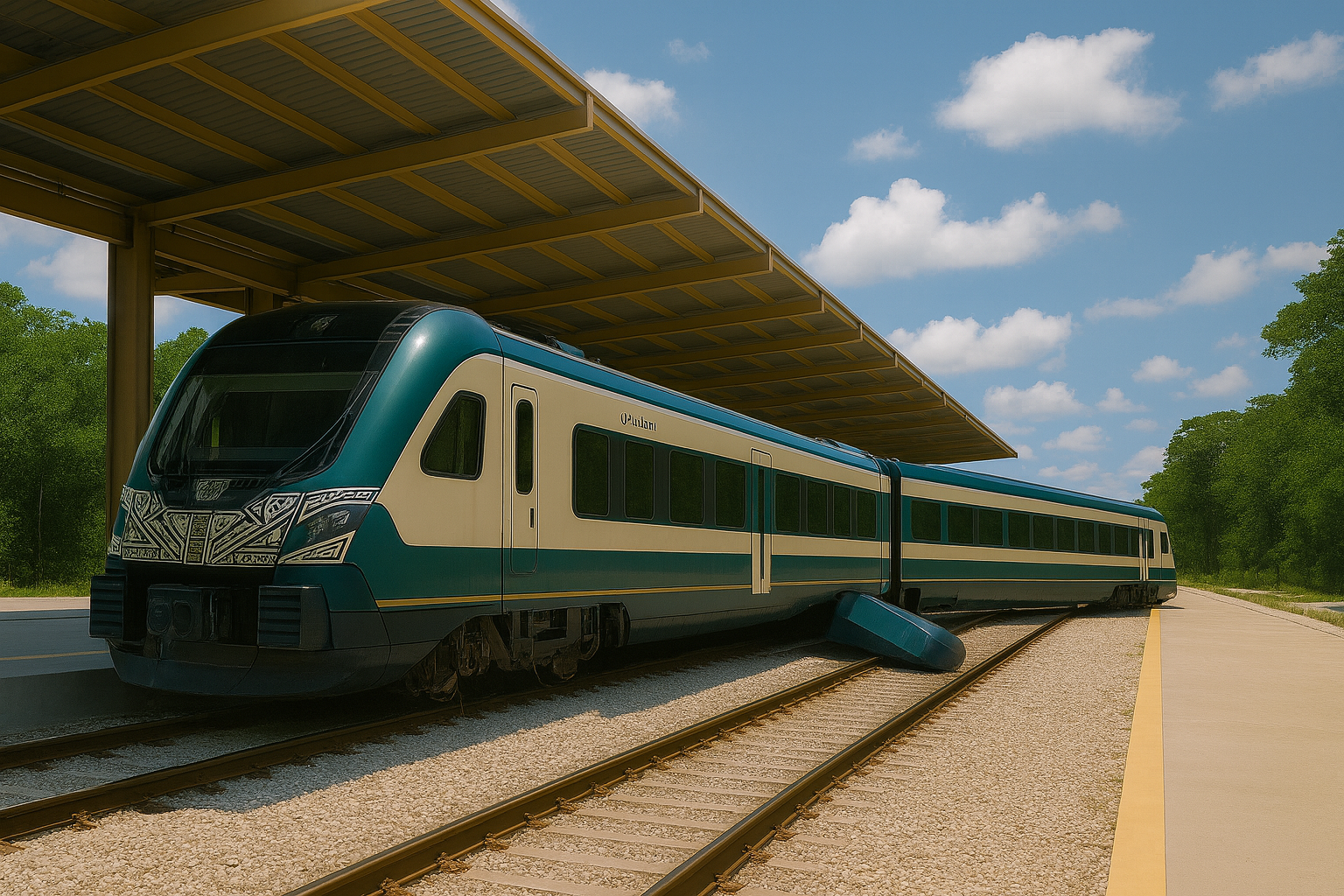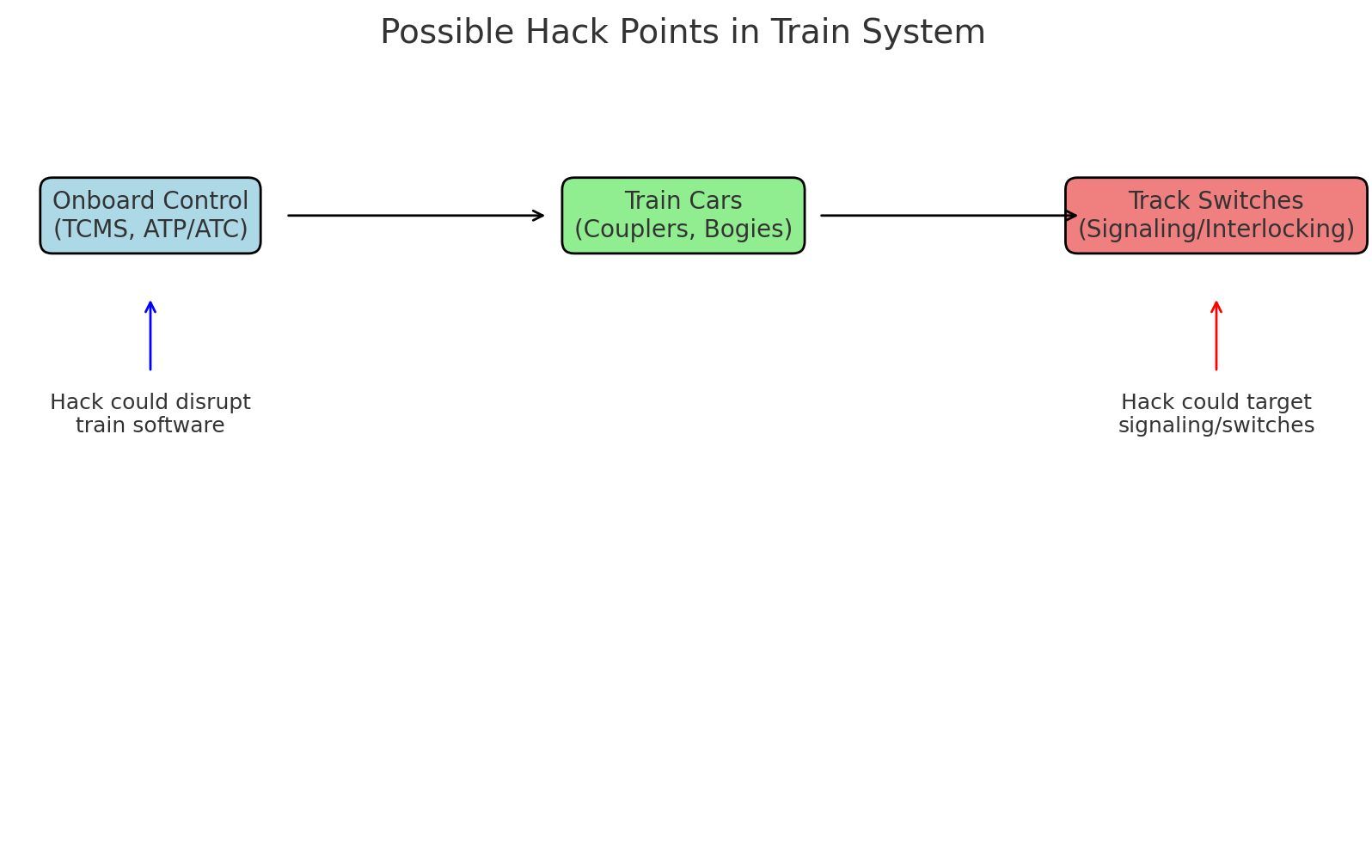Could Hackers Derail the Mayan Train? The Hidden Risks of One Car Going Rogue
 Statistics show that, in terms of train wrecks, only in 2022, Spain recorded around 150, while in the United States were more than 1,600. That was highlighted in a recent press conference Óscar David Lozano Eagle, director general of Railway Maya, SA de C. V., who argued that even the last derailment of the Train Maya —the second since its opening two years ago— remains minimal in comparison with the figures of the so-called developed countries.
Statistics show that, in terms of train wrecks, only in 2022, Spain recorded around 150, while in the United States were more than 1,600. That was highlighted in a recent press conference Óscar David Lozano Eagle, director general of Railway Maya, SA de C. V., who argued that even the last derailment of the Train Maya —the second since its opening two years ago— remains minimal in comparison with the figures of the so-called developed countries.
Even though the brand-new and modern Mayan Train has only experienced two derailments so far, both without casualties, the incidents are filled with mystery — and some even speculate about the possibility of a cyberattack.
It sounds like something straight out of a thriller: the Mayan Train cutting through the Yucatán jungle, when suddenly one car in the middle veers off onto another track while the rest of the train keeps going straight. At first glance, that seems impossible — after all, train cars are chained together and follow the locomotive’s wheels. But the truth is more complex, and it reveals why rail safety on the Tren Maya is as much about technology and cybersecurity as it is about steel and tracks.
Can a Single Car Really Take Another Path?
In theory, no. Under normal conditions, all cars follow the path determined by the locomotive and the leading wheels. Yet, history shows us that problems with switches (the movable rails that allow trains to change direction) can cause chaos.
If a switch moves or fails while the train is passing, the first wagons may cross safely, while later cars encounter a misaligned track. That’s when one bogie (wheel set) can be pulled sideways, creating a dangerous split derailment. In other words: a single car may appear to “go rogue,” not because it chose to, but because the rail infrastructure betrayed it.
Who Holds Responsibility on the Mayan Train?
On the Tren Maya, responsibility for preventing such failures is divided between several layers of management and technology. First comes SEDENA (the Mexican Army), which now oversees the operation and maintenance of the railway. As the infrastructure manager, SEDENA bears the duty of ensuring that every switch and track component is inspected and maintained to the highest standard.
Then there is the signaling and interlocking system provided by Alstom and its consortium partners. This technology is designed to lock switches into place so they cannot move while a train is passing. If one did, it would indicate a serious technological failure. And because this system is digitally controlled, the risk is not only mechanical — given the strong private interests opposed to the Mayan Train, a cyberattack cannot be ruled out. A malicious intrusion could, in theory, manipulate a switch or disable alarms, making cybersecurity just as essential as physical maintenance.
The central command center, also run by SEDENA with Alstom’s systems, adds another layer of accountability. Human operators authorize routes and monitor traffic. If a switch were moved at the wrong moment, it would point to a human error in dispatch.
Finally, there are safety layers such as Automatic Train Protection (ATP) and the European Train Control System (ETCS). These systems are supposed to detect unsafe conditions and stop the train before disaster strikes. If they failed, it would raise questions not only about equipment reliability but also about oversight.
️ The Overlooked Threat: Cyberattacks
Beyond mechanical or human failure, cybersecurity threats represent a new frontier of risk. Unlike traditional trains, the Mayan Train relies heavily on digital interlocking and centralized signaling. That makes it vulnerable to malicious interference, whether from disgruntled private actors or organized cybercrime.
A cyberattack could trigger a false signal, unlock a switch, or disable detection systems at the wrong moment. International rail networks have already documented cases where hackers targeted signaling systems, underlining that rail safety today is as much about firewalls and encryption as about bolts and steel rails.
he hypothetical scenario is that a hacker somehow made only the third car of the Tren Maya change direction (while the rest of the train stayed on track), we need to look at which systems could even allow that kind of interference.
Train Architecture Basics
-
Rolling Stock (cars, bogies, couplers)
-
Cars are physically linked by mechanical couplers. They cannot decide individually where to go — they follow the rails.
-
There is no onboard “steering” in a train car. So mechanically, a car alone cannot switch tracks.
-
-
Switches / Turnouts
-
Track junctions are controlled by switches (points), moved by electric motors.
-
These are managed by signaling and interlocking systems, often remotely from a central control room.
-
Hackers could theoretically manipulate these if the system were insecure — but switches apply to the whole train, not just one car.
-
-
Train Control & Signaling
-
Modern trains use ATP/ATC (Automatic Train Protection/Control) and sometimes CBTC (Communications-Based Train Control).
-
These systems, developed by companies like Alstom (after absorbing Bombardier), integrate train speed, braking, and communication with the central signaling system.
-
If hacked, this could cause derailments, unsafe movements, or route changes — but again, this applies to the entire train.
-
So, What Could Be Hacked?
-
The signaling/interlocking system:
That’s the most plausible target. A hacker could try to manipulate a switch while a train is passing, causing a derailment that might make one or more cars leave the track. -
The onboard control software (TCMS – Train Control & Monitoring System):
This runs diagnostics, braking, and coordination across cars. A compromise could cause a train to brake unevenly or destabilize, but still not make “only the third car” change direction deliberately. -
The communication network (between train and central control):
Interference here could inject false commands. But again, commands are applied train-wide, not car-by-car.
The “One Car Only” Scenario
In reality:
-
A single car diverging while the rest continues straight is physically impossible unless there’s a mechanical failure in the coupler or bogie, or a derailment caused by a switch thrown at the wrong moment.
-
A hacker could trigger such a derailment by hacking the signaling/switch system, not the car itself.
✅ Answer in a nutshell:
If a hacker were responsible, the vulnerable point would be the signaling/interlocking system that controls the track switches (managed through Alstom/Bombardier digital control technology). This is where cyber-attacks could have real consequences — but they couldn’t make “just one car” turn intentionally. That effect would actually be a derailment.

✅ In Simple Words
If a single car of the Mayan Train were to suddenly veer off, the most likely cause would be a faulty or moved switch. Responsibility would fall on both the infrastructure operator (SEDENA) and the technology provider (Alstom and partners). But in today’s digital landscape, the story doesn’t end there — a cyberattack could be just as dangerous as a loose bolt, and defending against it is now part of the safety equation.





